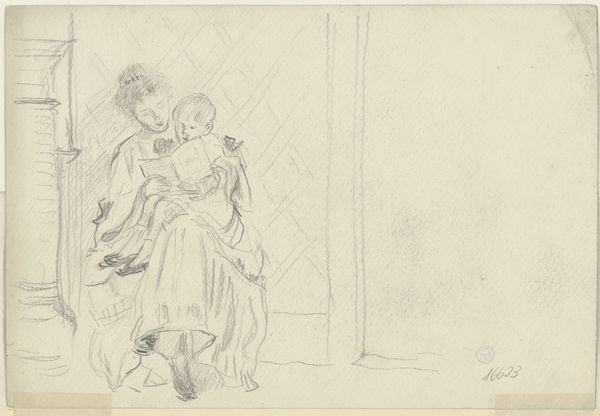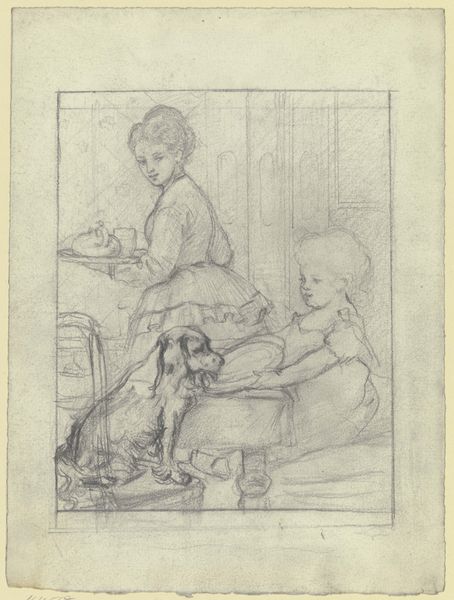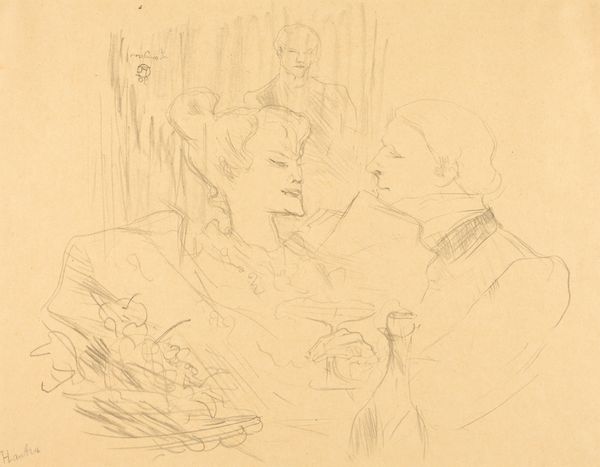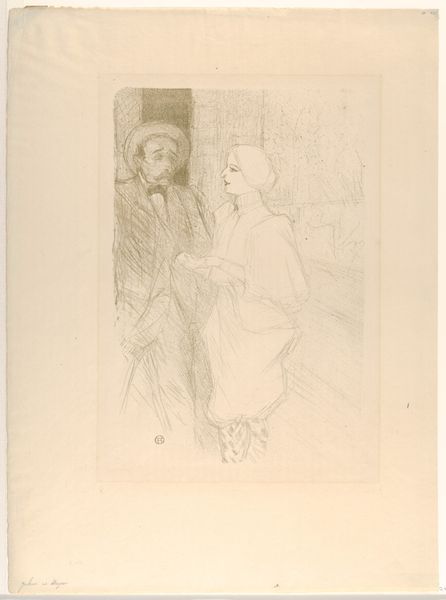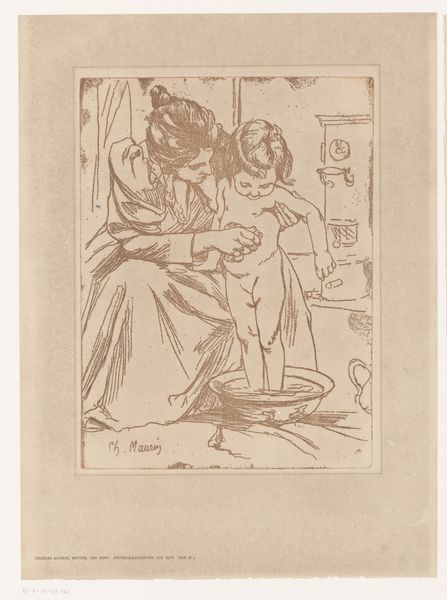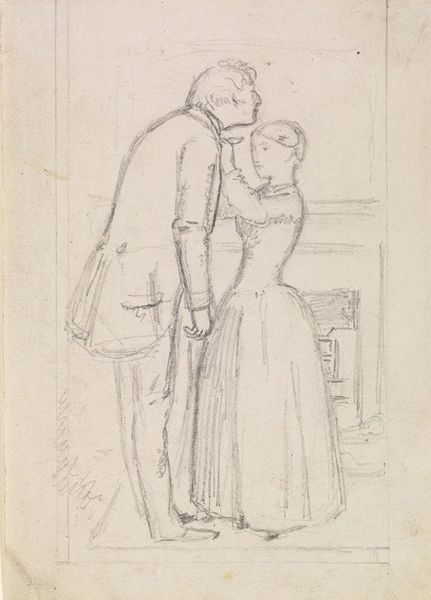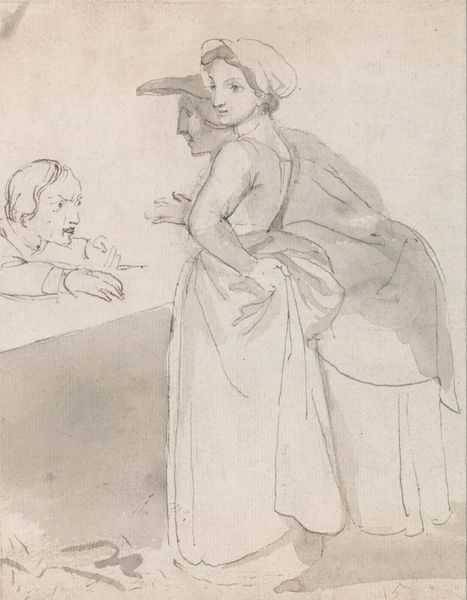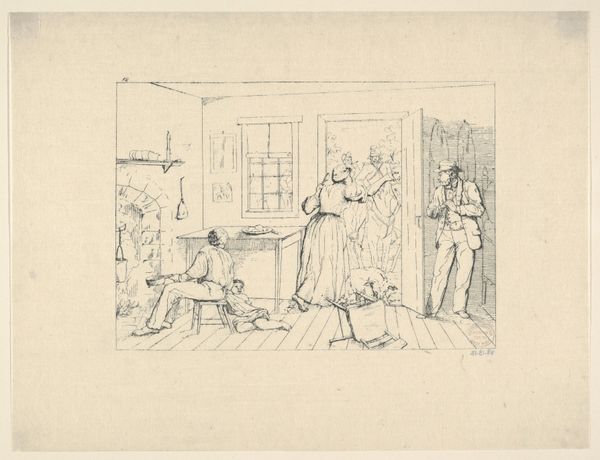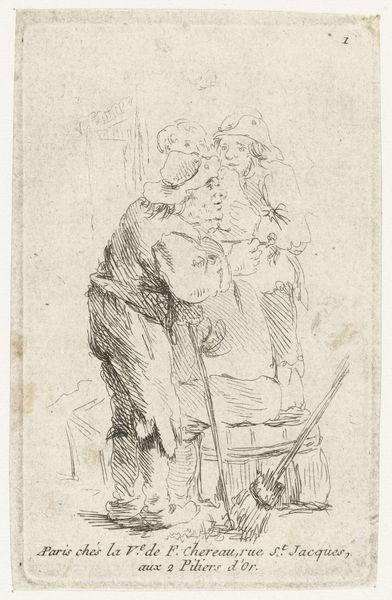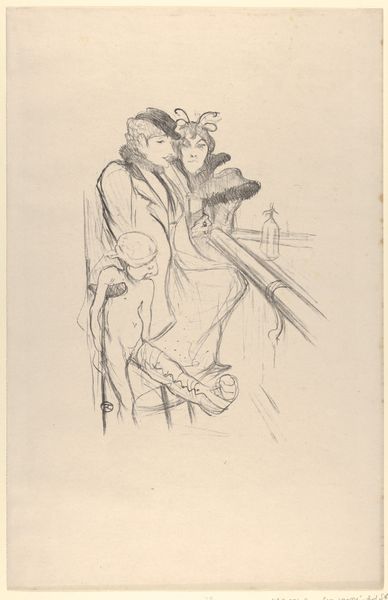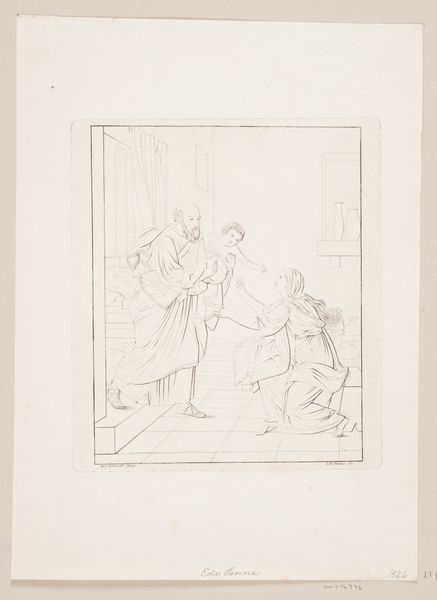
Maleren C.D.Gebauer tegner for Jomfru Margrethe Hahn 1829
0:00
0:00
drawing
#
portrait
#
drawing
#
figuration
#
romanticism
#
portrait drawing
#
genre-painting
Dimensions: 164 mm (height) x 215 mm (width) (bladmaal)
Curator: This subtle sketch, housed here at the SMK, offers a fascinating peek into the artistic process. It's Christen Købke's 1829 drawing, “Maleren C.D. Gebauer tegner for Jomfru Margrethe Hahn"—that's "The painter C.D. Gebauer drawing Miss Margrethe Hahn" in English. A snapshot, if you will, rendered in pencil. Editor: I find this instantly charming! It feels so intimate, like catching a private moment. There's a softness to the light and line work that makes it surprisingly tender, especially considering it’s just a sketch. Curator: Precisely. Köbke was a master of capturing the everyday, and it's amazing how much information he conveys with so few lines. What interests me most is how this image represents the power dynamics of the time. Gebauer, the established artist, and Hahn, the young woman being drawn. The gaze, the poses, even their relative positions within the composition tell a story. Editor: Yes, the composition is striking. Gebauer, turned away, absorbed, almost barricaded behind his table. And Margrethe, poised elegantly, yet somewhat passive, waiting for the artist's verdict. Do you think the lack of intense detail almost humanizes the subjects—keeps them available to us? Curator: That’s a very insightful observation! The drawing remains intentionally uncompleted, keeping this kind of dynamic fluid and unsettled. Consider also the function of portraits then, they weren't simply aesthetic objects but actively promoted the sitter’s social status. Who commissioned whom, was an active signifier of agency and capital. Editor: Absolutely, these things matter so much, particularly for the Hahn family. It feels unfinished but full of life. Köbke really allows us to participate, doesn't he? To ask ourselves questions about that dynamic—it could have been another artwork that rendered this moment with more ego! Curator: Exactly, and that invitation, that very opening up of possibilities, feels incredibly modern, wouldn't you say? We can consider its place in Romanticism, as well as seeing the way its visual language affects modern expectations of artist-muse relations. Editor: I agree. So it feels both anchored in its era and perpetually relevant. I'm always drawn to art that speaks to multiple conversations simultaneously—the technical virtuosity alongside the questions that trouble it. Curator: Well said. I think Købke manages to pull that off beautifully here.
Comments
No comments
Be the first to comment and join the conversation on the ultimate creative platform.
